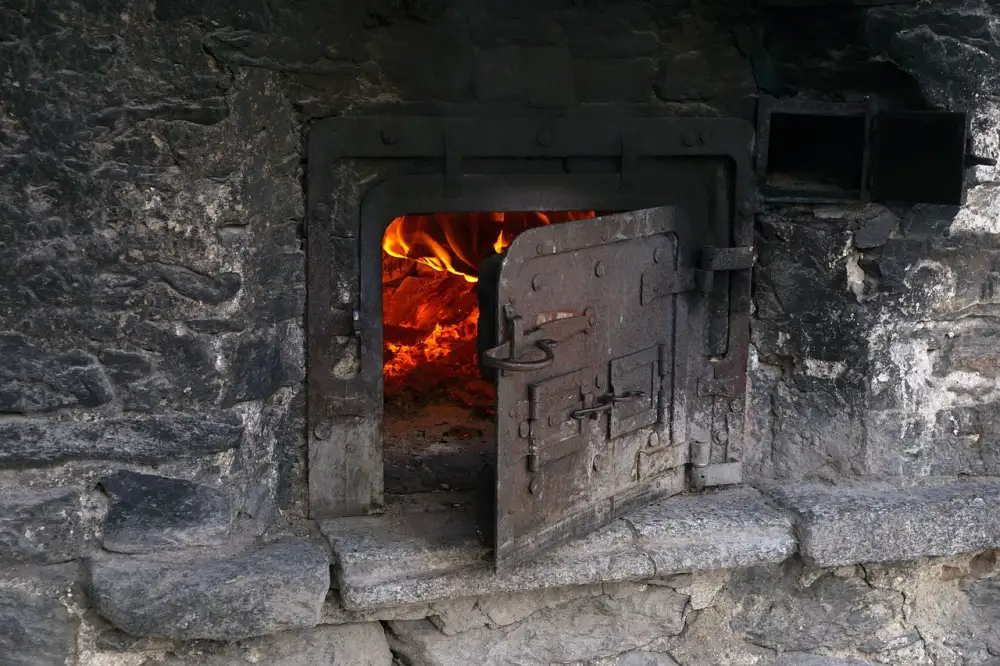Master the Art of Cooking with a Convection Oven: A Step-by-Step Guide for Home Chefs

- Understanding the Basics of a Convection Oven
- Preheating Your Convection Oven
- Adjusting Cooking Time and Temperature
- Proper Placement of Cookware in a Convection Oven
- Utilizing the Convection Fan for Even Cooking
- Tips for Baking in a Convection Oven
- Roasting and Broiling in a Convection Oven
- Cleaning and Maintenance of Your Convection Oven
Convection ovens have revolutionized the way we cook, offering faster and more efficient results compared to traditional ovens. With their built-in fans, these appliances circulate hot air evenly around the food, ensuring consistent cooking and browning. Whether you're a novice or an experienced home chef, mastering the art of cooking with a convection oven will elevate your culinary skills to new heights. In this comprehensive guide, we will walk you through the basics of using a convection oven, from preheating to adjusting cooking time and temperature. Get ready to unlock a world of delicious possibilities in your kitchen!
Understanding the Basics of a Convection Oven
A convection oven is a kitchen appliance that uses a fan to circulate hot air evenly throughout the cooking chamber. This constant circulation of hot air ensures faster and more even cooking, resulting in perfectly cooked dishes every time.
Unlike traditional ovens, which rely on radiant heat from the top and bottom heating elements, convection ovens distribute heat evenly by blowing it around with the help of a fan. This not only reduces cooking time but also eliminates hot spots, ensuring that your food is cooked uniformly.
The fan in a convection oven can be either located at the back or on top of the oven cavity. Back-mounted fans are more common and provide better airflow, while top-mounted fans are ideal for browning and crisping foods.
Convection ovens come in both gas and electric models. Gas convection ovens use natural gas or propane as their energy source, while electric convection ovens rely on electricity. Both types offer similar benefits in terms of even cooking and reduced cooking time.
It's important to note that not all recipes are suitable for convection cooking. Some delicate baked goods, such as soufflés or custards, may not fare well in a convection oven due to the strong airflow. However, most recipes can be easily adapted for convection cooking by making slight adjustments to temperature and cooking time.
By understanding how a convection oven works and its unique features, you'll be able to make the most out of this versatile appliance and elevate your culinary skills to new heights.
Preheating Your Convection Oven
Preheating your convection oven is an essential step to ensure even cooking and optimal results. Unlike traditional ovens, convection ovens rely on the circulation of hot air to cook food. Preheating allows the oven to reach the desired temperature before you start cooking, ensuring that your dishes are cooked evenly from start to finish. To preheat your convection oven, simply set the desired temperature and allow it to heat up for about 10-15 minutes. This will ensure that the oven is at the right temperature when you place your food inside, resulting in perfectly cooked meals every time.
Adjusting Cooking Time and Temperature
One of the key advantages of cooking with a convection oven is its ability to cook food faster and more evenly. However, this also means that you need to make some adjustments to the cooking time and temperature compared to traditional ovens.
To start, reduce the cooking temperature by about 25 degrees Fahrenheit (or 15 degrees Celsius) when using a convection oven. This is because the circulating hot air in the oven cooks food more efficiently, so you don't need as high of a temperature.
Next, adjust the cooking time. In general, you can reduce the cooking time by about 25% when using a convection oven. For example, if a recipe calls for baking something for 40 minutes in a conventional oven, you would only need to bake it for around 30 minutes in a convection oven.
However, it's important to keep an eye on your food while it's cooking as every recipe and oven may vary slightly. Use visual cues like browning or internal temperature to determine when your dish is done.
By making these simple adjustments to both temperature and cooking time, you'll be able to achieve perfectly cooked meals every time with your convection oven.
Proper Placement of Cookware in a Convection Oven
Proper placement of cookware in a convection oven is crucial for achieving optimal cooking results. When using a convection oven, it is recommended to use shallow and wide pans or baking sheets. This allows the hot air to circulate evenly around the food, ensuring even cooking and browning. Avoid using deep or covered dishes as they can obstruct the airflow.
It is also important to leave enough space between the cookware items to allow for proper air circulation. Crowding the oven with too many pans can disrupt the flow of hot air and result in uneven cooking.
When placing multiple trays in the oven, make sure to stagger them on different racks rather than stacking them directly on top of each other. This ensures that each tray receives equal heat distribution.
Additionally, it is advisable to use light-colored or reflective cookware as they help to distribute heat more evenly. Dark-colored pans tend to absorb more heat and may cause food to brown too quickly or become overcooked.
By following these guidelines for proper placement of cookware in a convection oven, you can ensure that your dishes are cooked uniformly and come out perfectly every time.
Utilizing the Convection Fan for Even Cooking
One of the key features of a convection oven is its built-in fan, which circulates hot air throughout the cooking chamber. This fan helps to distribute heat evenly, resulting in perfectly cooked dishes every time.
To take full advantage of this feature, it's important to understand how to utilize the convection fan effectively. First and foremost, make sure that the fan is turned on before you start cooking. Most convection ovens have a dedicated button or setting for this purpose.
When using the convection fan, it's crucial to adjust your cooking time and temperature accordingly. The circulating hot air cooks food faster than in a traditional oven, so you'll need to reduce both the time and temperature by about 25 degrees Fahrenheit (15 degrees Celsius). Keep a close eye on your dish as it cooks to prevent overcooking.
Proper placement of cookware is also essential for even cooking with a convection oven. Avoid overcrowding the oven and leave enough space between dishes for proper air circulation. Use shallow pans or baking sheets with low sides to allow hot air to flow freely around your food.
Additionally, consider using lightweight aluminum or stainless steel cookware, as they conduct heat more efficiently in a convection oven. Avoid using glass or ceramic dishes that may hinder airflow.
Remember that different types of food may require different adjustments when utilizing the convection fan. For example, delicate baked goods like cakes and pastries might benefit from reducing both time and temperature slightly more than other dishes.
By understanding how to properly utilize the convection fan in your oven, you can achieve consistent and even cooking results every time. Experiment with different recipes and keep track of any adjustments you make along the way. With practice, you'll become an expert at mastering the art of cooking with a convection oven.
Tips for Baking in a Convection Oven
1. Reduce the temperature: When baking with a convection oven, it's best to lower the temperature by about 25 degrees Fahrenheit compared to traditional baking recipes. This is because the hot air circulation in a convection oven cooks food faster.
2. Use shallow pans: Opt for shallow baking pans or cookie sheets instead of deep ones. This allows the hot air to circulate evenly around the food, resulting in crispier and more evenly baked goods.
3. Monitor cooking time: Keep a close eye on your baked goods as they may cook faster than expected in a convection oven. Set a timer for slightly less than the recommended cooking time and check for doneness accordingly.
4. Rotate pans halfway through: To ensure even browning, rotate your baking pans halfway through the cooking process. This helps to distribute heat evenly and prevent any hot spots.
5. Avoid overcrowding: Leave enough space between your baked goods on the oven racks to allow proper air circulation. Overcrowding can lead to uneven baking and may result in undercooked or burnt areas.
6. Check for doneness early: Due to the faster cooking time in a convection oven, it's important to start checking for doneness earlier than usual. Use visual cues such as golden brown color or toothpick tests to determine if your baked goods are ready.
By following these tips, you'll be able to achieve deliciously baked treats with perfect texture and even browning using your convection oven!
Roasting and Broiling in a Convection Oven
Roasting and broiling are two popular cooking methods that can be easily mastered with a convection oven. When roasting, the convection fan circulates hot air around the food, resulting in even browning and crispiness. To achieve the best results, use a shallow roasting pan and place it on the center rack. Make sure to leave enough space between the food items for proper air circulation.
Broiling in a convection oven is similar to traditional broiling but with added benefits. The convection fan helps to distribute heat evenly, ensuring that your food is cooked thoroughly. To broil effectively, use a broiler pan or a baking sheet lined with aluminum foil to catch any drippings. Place the food on the top rack of the oven, close to the heating element.
When roasting or broiling in a convection oven, it's important to monitor your food closely as it may cook faster than in a conventional oven. Adjusting the cooking time and temperature may be necessary based on your recipe and personal preference.
Remember to preheat your convection oven before roasting or broiling for optimal results. This will ensure that your food cooks evenly and efficiently. With practice and experimentation, you'll soon become an expert at roasting and broiling delicious meals using your convection oven.
Cleaning and Maintenance of Your Convection Oven
Cleaning and maintaining your convection oven is essential to ensure its optimal performance and longevity. Here are some tips to keep your oven in top shape:
1. Regularly clean the interior of the oven using a mild detergent and warm water. Avoid using abrasive cleaners or scrub brushes that can damage the oven's surface.
2. Remove any spills or food debris immediately after each use to prevent them from baking onto the oven walls or heating elements.
3. Clean the convection fan regularly by removing it from the oven and wiping it with a damp cloth. Be sure to turn off the power before doing this.
4. Check and clean the oven's seals regularly to ensure they are intact and free from dirt or debris. Damaged seals can affect the oven's efficiency.
5. Clean the exterior of the oven with a soft cloth and mild detergent. Avoid using harsh chemicals or abrasive materials that may scratch or damage the surface.
6. Schedule professional maintenance at least once a year to inspect and service any internal components, such as heating elements or fans, that may require attention.
By following these cleaning and maintenance practices, you can extend the lifespan of your convection oven while ensuring it continues to deliver delicious results every time you cook.
In conclusion, mastering the art of cooking with a convection oven can elevate your culinary skills to new heights. By understanding the basics of a convection oven and following the proper techniques, you can achieve even cooking and delicious results every time. Remember to preheat your oven, adjust cooking time and temperature accordingly, and place your cookware correctly for optimal heat distribution. Utilize the convection fan for consistent baking, and explore the versatility of roasting and broiling in a convection oven. Lastly, don't forget to regularly clean and maintain your oven for long-lasting performance. With practice and patience, you'll soon become a pro at creating delightful bites with your convection oven. Happy cooking!
Published: 18. 01. 2024
Category: Home



